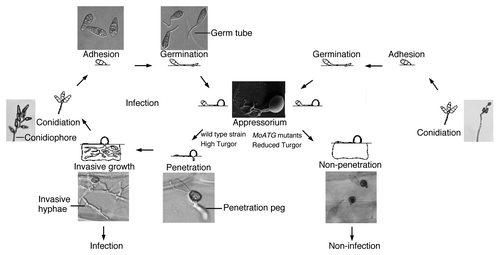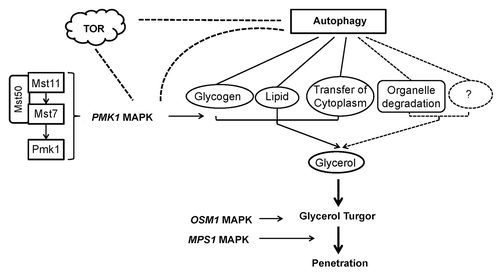Figures & data
Figure 1. Life cycle of Magnaporthe oryzae. Conidia germinate and develop a specialized infection structure, the appressorium. The structure produces a penetration peg, which will lead to invasive growth in and between host cells. This infection cycle is destroyed in the autophagy-blocked mutants.

Figure 2. Model for the relationships between autophagy, appressorium turgor and the MAPK pathway in M. oryzae. In this model, the PMK1 MAPK pathway controls the mobilization of glycogen and lipid reserves to the developing appressorium. Glycerol accumulation is regulated by autophagy, transfer of cytoplasm, and degradation of glycogen, lipid, organelles, or other materials. Appressorium turgor is generated and hydrostatic turgor is translated into the force required for cuticle penetration. The OSM1 and MPS1 MAPK pathways may regulate development of turgor pressure and application of turgor pressure to penetration, respectively. Dashed lines indicate the conjectural relationships.
